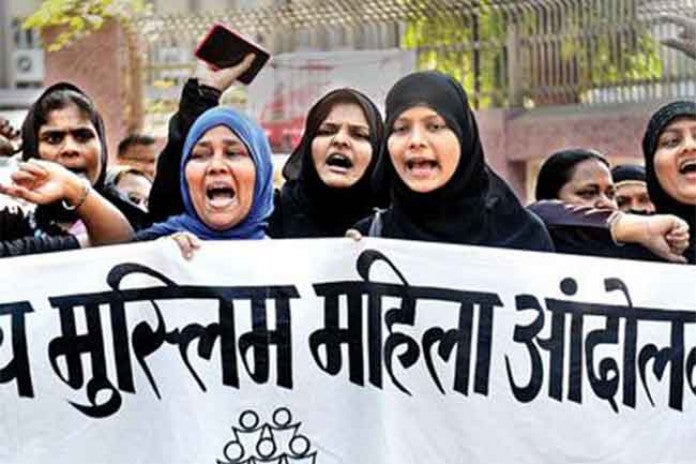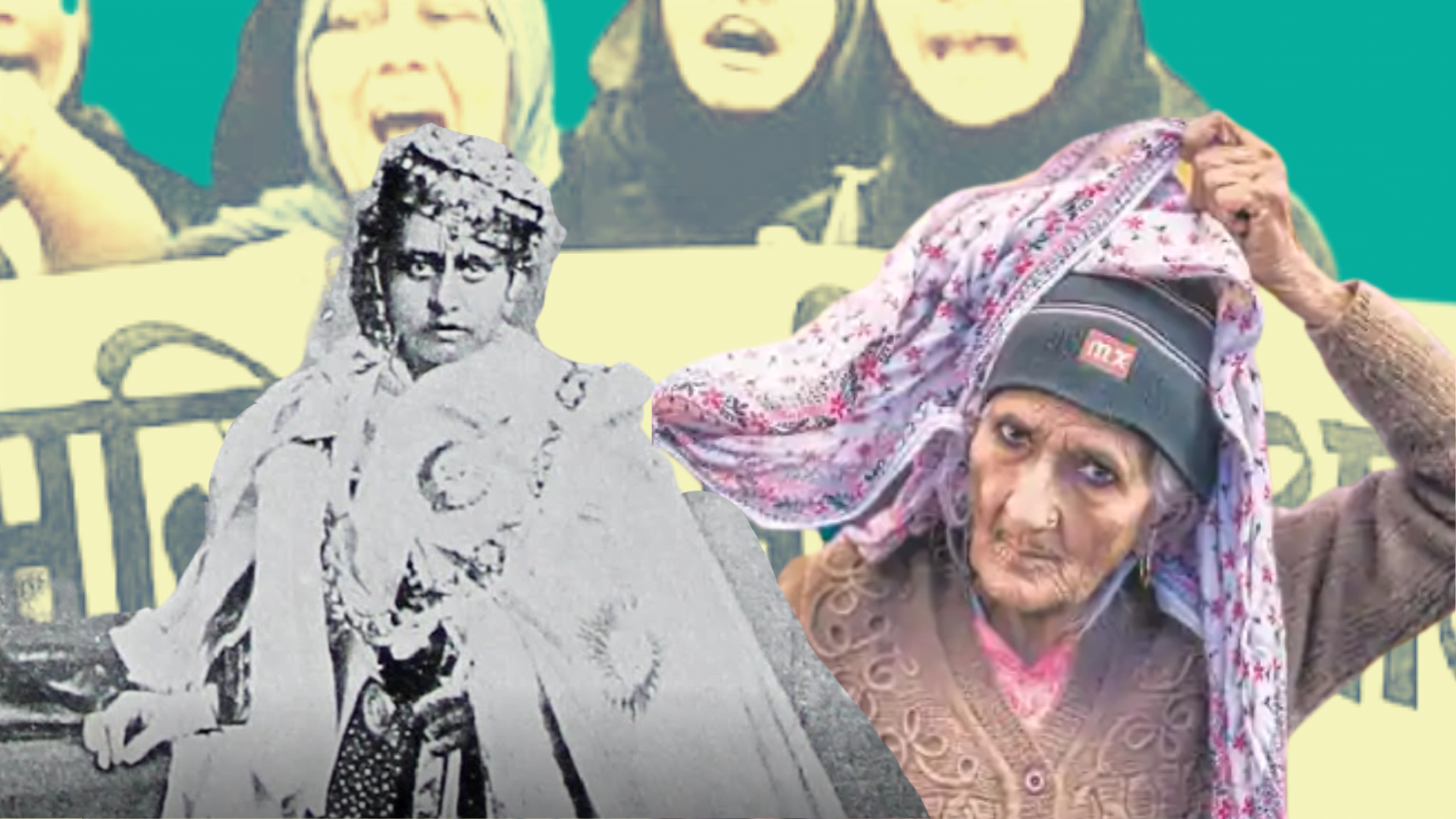When the picture of visibly Muslim women leading a protest at Jamia Millia Islamia (JMI) went viral about an year ago in December 2019, a flurry of conversations started. Some lauded this new Muslim women leadership, some debated on the appropriateness of hijab-clad women in public spaces, while some questioned the protests. As days progressed, further Muslim women leadership emerged at a formerly little known place called Shaheen Bagh, where a number of women gathered exercising their constitutional right, one of whom was Bilkis Dadi, who went on to be featured in TIME’s list of 100 influential people.
This struggle of Indian Muslim women to make their presence visible is not new, having spent a fair amount of my life trying to manoeuvre using this identity: from being seen as oppressed to having to prove my worth as a fellow citizen to some and a Muslim to others. Before I proceed, I want to make it clear that I don’t seek to represent anyone through my notions of this identity.
Apart from the fact that women have been oppressed and denied any form of leadership for centuries, Muslim women had to bear the brunt of overthrowing religious manifestations of oppression and also their religious minority status in India. It is also important to note that women leadership in India is not well developed, let alone Muslim women leadership. Apart from some well-known names in Indian politics, women leadership in India is largely confined to non-governmental organisations, which although important, are however usually not considered to be the mainstream forms of leadership.
Also read: Looking Beyond The Stereotypes: Muslim Women In India
History
B.S Minhas in his framing of leadership framework with respect to social development says that leaders, however charismatic, are not always social reformers. Their charisma is of no used when it is not complemented with sound moral values. And these kinds of leaders usually do not contribute to nation building and this is true of community building also. This is the context in which the need to have a leader which represents the community–be it representation in terms of gender, religion, caste, region or sexual orientation arises. And this usually proves to be fruitful for social development and change, when this representative leadership is not confined to the people it is representing, but leads a heterogeneous group of followers and people.
One such attempt in India was the form of Muslim women leadership called All-India Ladies Association, founded in 1918 by an elite group of Muslim women in the princely state of Bhopal. One of the foremost leaders in this effort was the Nawab Sultan Jahan Begum, the ruler of Bhopal. She was involved in attempts to educate women and she highlighted and blamed the failure of men to expand the education realm to involve the women, as only one school had been founded, which mostly catered to the elite section of the society. The Begum was highly resourceful as a leader and sought to transform the condition of Muslim women through her role in the formation of the All-India Ladies Association (AILA), a group which concentrated on all the women folk and did not involve the earlier ideas of sectarian development which were reflected during the formation of the All-India Muslim Ladies’ Conference.

A hurdle which Muslim women leadership had to go through is the absence of Muslim women in Indian history is that these secular organisations with Muslim women leadership were largely invisible in the nationalist historical works.
Another hurdle which Muslim women leadership had to go through as Mahua Sarkar points out in her work on the absence of Muslim women in Indian history is that these secular organisations with Muslim women leadership were largely invisible in the nationalist historical works.
Apart from the fairly elitist contribution to reformation through leadership, another person who emerges strong on the front of Muslim women leadership is Begum Rokeya Sakhawat Hossein. A woman of high intellect, who with her work “Streejatir Abnati” brought out the nuances of concepts like women and jewellery. She emphasised on the problems of subjugation of women through the use of worldly possessions like jewellery. She termed this as “mental enslavement” wherein women are in the state of “permanent idleness” due to the lack of opportunities to engage in any productive work and this in turn, helped their dependence on men.
Development of a Separate Indian Muslim Women Discourse
Post-independence discourse on Muslim women largely concentrated on the religious oppression of Muslim women and this led to the otherisation of Muslim women, which further segregated them from the mainstream society, further alienating any forms of Muslim women leadership that might have emerged. Muslim women have to continuously present a public image which does not hamper the already-strained image of Muslims in general in India. And along with justifying their stance to the wider community, they have to engage with the religious leadership within their community, making it harder for them to present a strong representative front. As mentioned before, Muslim women being absent from historical writings worsens their struggle.
Apart from this, cases like Shah Bano, which were highlighted by the media, have made the Muslim women leadership restricted to the issues of religion and there is not much discourse on the acceptance of leadership positions of Muslim women, which represent Indian women at large. The kind of Muslim women leadership which was envisioned in 1918 by Nawab Sultan Jahan Begum has over time lost relevance as the otherisation and homogenization of Muslims continues.
Emergence of Muslim Women Leadership in Contemporary India
Despite these hindrances, Muslim women leadership, albeit within the confines of the community has emerged. Other such organisations are the All India Muslim Women’s Personal Law Board (AIMWPLB) and the Bharatiya Muslim Mahila Andolan (BMMA). The aim of these organisations is to challenge the dominant masculine discourse in the religious texts. This, again highlights the confinement of Muslim women leadership to certain areas and neglects the other areas of leadership that Indian Muslim women can venture into.

Mengia Hong Tschalaer tries to unravel the emergence of Muslim women into the public space, which is the initial step towards establishing their presence in order to occupy positions of leadership. It is important to note that in order for Muslim women leadership to emerge in such positions, one of the most important aspect that they have to display is “modesty in clothing” which is not the same for their male counterparts.
Mengia Hong Tschalaer tries to unravel the emergence of Muslim women into the public space, which is the initial step towards establishing their presence in order to occupy positions of leadership. It is important to note that in order for Muslim women leadership to emerge in such positions, one of the most important aspect that they have to display is “modesty in clothing” which is not the same for their male counterparts.
Along with this generic requirement of women leaders, across fields (public/private/ political), Muslim women in particular have the burden of upholding the secular values of the Indian State, which has to periodically be brought in through public display of actions and decisions. And this has to be complemented with the demands of the Muslim clergy in order to gain acceptance from the Muslim community at large.
The founders of the above mentioned organisations have taken to English media in order to discuss and encourage engagement of analytical issues, which is a step in the right direction in India, where the English-reading and understanding public is largely responsible for the creation of perceptions. These organisations have cropped up in Lucknow, a place where mostly the male-dominant clergy dictates the rest of the people from the Muslim community. This is a step in the right direction for Muslim women leadership in woman-led organisations which strongly want to oppose the very basis of this male-dominated leadership and take over the public discussion regarding the other half of the population.
James MacGregor Burns explains that transformational leadership is a form of mutual stimulation, which may convert followers into leaders and leaders into moral agents. Although, Indian Muslim women movements haven’t yet reached the pinnacle in their existence till date, the conversion of followers into leaders is in the process of actualisation. Although the start of such leadership movements is with the purpose of achieving certain long-term goals such as the transformation of the Muslim society as a whole and also the perception of the society about the community, the leadership doesn’t always conform with the kind of leadership expected in transformational leadership and it is influenced by the intersectional nature of Indian Muslim women’s identity.
The women-run organisations have to answer and comply with the expectations of a very heterogeneous group, and it is conflicted with the idea of the group being its followers or mere spectators in some cases. This further endangers the Muslim women leadership as its purpose and followers are not well defined and have to be changed routinely in order to fit the population into its goals.
Also read: Women’s Agency In Shaheen Bagh And In Other Protests Against CAA
Conclusion
The Indian Muslim women are trying to occupy public space in order to get to the next step towards Muslim women leadership. This piece summarises how the hindrances of the intersectional nature of identity interfere in the creation of such a leadership and also the ideas of the historical movements in a similar vein. The Indian Muslim women have been homogenised and talked for, by the media and people at large. The presence of Muslim women leadership, although restricted to the Muslim community shows some hope of revival of a time wherein the mic needn’t be passed, but the Muslim women leadership itself is such that it is capable of the talking that needs to be done.
For now, the restrictive nature of democracy that we are descending into doesn’t leave any hope for the community, but it does push the community to develop leadership in order to counter the dominant narrative and it remains to be seen whether thinking that this leadership will emerge from the Muslim women, who are done being at the receiving end of this structured exclusion from mainstream society.




